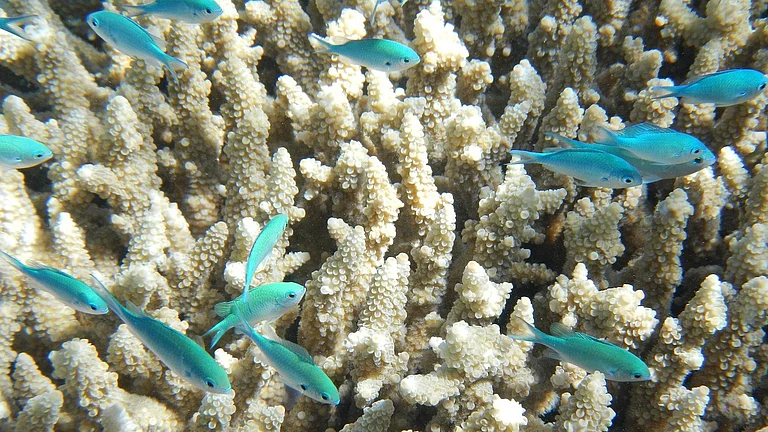Western Australia’s reefs record worst bleaching after 2023–2024 marine heatwaves, with mortality reaching 90% in some sites.
NOAA confirms 84% of world’s reefs faced bleaching-level heat stress from early 2023 to mid-2025.
Scientists warn prolonged warming could cause irreversible coral loss, impacting marine ecosystems and communities reliant on reef resources.
Western Australia Sees Worst Coral Bleaching as Marine Heatwaves Hit 84% of World’s Reefs
Australia’s coral reefs face record bleaching amid unprecedented marine heatwaves, threatening marine biodiversity and coastal livelihoods worldwide
The coral reefs off the Western Australian’s coast have experienced the worst bleaching on record after the country’s most severe marine heatwave and mortality ranging between 11 to over 90% in some areas, according to a report published by Australian Institute of Marine Science (AIMS).
The coral bleaching reported across 1,500 km has been official documented as the longest, largest and most intense event on record for Western Australia, scientists have said.
The bleaching is part of the ongoing fourth mass coral bleaching event confirmed by the National Oceanic and Atmospheric Administration (NOAA) on April 15, 2024.
AIMS also reported record breaking ocean temperatures in 2023 and 2024 led to the "most severe coral bleaching on record" for WA coral reefs across both the northwestern and central reefs.
Heat Stress Hits Record
The persistence of marine heatwave conditions across the northwest from winter 2024 to autumn 2025 underpin the significance of this warming event, the report released on August 12 stated.
“The length and intensity of the heat stress, and its footprint across multiple regions, is something we’ve never seen before on most of the reefs in WA. For individual coral reefs we are still crunching the numbers around Degree Heating Weeks (DHW) — a measure of heat stress on corals — but early estimates are over 15 DHWs on all reefs and up to 30 DHWs at some Pilbara reefs. Eight DHWs is the level of heat stress we generally consider severe enough to cause coral mortality,” the AIMS report said.
AIMS coral scientist Nicole Ryan, who coordinates the WA Coral Bleaching Group, said in a statement, “The heat stress will beat records set during the 2011 La Nina and the 2016 El Nino on all but the southernmost reefs, in the south of Ningaloo, Shark Bay and the Abrolhos Islands.”
Ningaloo Reef is a World Heritage-listed site, considered precious for its unique marine ecosystem and home to whale sharks, manta rays and humpback whales, turtles and technicolour coral gardens.
According to the findings, bleaching and mortality at Ashmore Reef ranged between 11 and 30%. In the Mermaid and Clerke reefs in the Rowley Shoals, the field surveys from April showed high mortality ranging 61 to 90% across the long-term monitored sites. The bleaching affected all habitats, from sheltered lagoons to deep outer reef slope up to 30 metres.
“At inshore southern Kimberley reefs, AIMS scientists supported Bardi Jawi Indigenous rangers to conduct bleaching surveys in February, recording high levels (31 to 60%) of bleaching at most monitoring sites. They reported coral mortality in March,” the statement said.
At sites in Ningaloo, surveys pointed out that in May, bleaching and mortality peaked up to 60%, with areas in Tantabiddi and Jurabi especially hit hard.
Globally, this bleaching crisis is unprecedented. From early 2023 to mid-2025, bleaching-level heat stress has affected 83.9% of the world’s coral reefs, according to NOAA—surpassing all previous events and heightening concerns for global marine biodiversity and coastal livelihoods, according to Coral Reef Watch.

